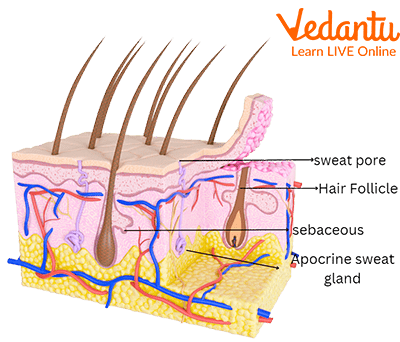




Overview of the Human Body
The human body is both complex and magical at the same. Humans are the most beautiful creatures in this world. Like the exterior, our interior is developed in a properly organised structure. These structures are called human’s organs and are made up of cells. These cells are so small that one cannot see them with the naked eye. When the small cells inside our body grow into two and four, we grow.
In some way, we could say our body is just like a motorised vehicle. It not only works on petrol but requires good care as well. Our body must be well maintained for all the organs to work properly. The interior part of our body is very much different as compared to the exterior. We must know how to keep our interior temperatures in control. Further, in this article, we will talk about what keeps your body warm, how body heat is produced, and our body temperature.
What Keeps your Body Warm?
Before answering this question one must know that the interior part of the human body is quite hot. We might not be able to stand 40 degrees outside but, our interior part is quite hotter than that. Now, the body part that keeps our interior body warm is the hypothalamus. Hypothalamus is a part of the brain and its role is quite important.
The role of the hypothalamus is to check the current body temperature. It then compares the current body temperature with the normal temperature and which is 37°C. This whole process happens naturally no additional force is required. Now, if the hypothalamus finds out our body temperature is low, then this part generates more heat and ensures that the heat is maintained so that the body works well.
If the exterior temperature is higher than normal then, the hypothalamus ensures that no extra heat is produced. It tries cooling off the interior so that no extra heat is produced. Moreover, the hypothalamus is what keeps your body warm.

Hypothalamus
How Body Heat is Produced?
Other than the hypothalamus, humans can generate body heat to keep themselves warm. The human body can produce heat by running, jogging, walking, and shivering, and this process is called thermogenesis. When such activities are done to produce heat, the thyroid glands in our body release hormones to increase the metabolism rate.
The metabolism produced inside our body increases energy, and as a result, it produces a lot of heat. Now, when a lot of heat is produced, the human body then releases it as sweat. This is how body heat is produced. Now, when our internal temperature changes, it is the censors in our nervous system that sends a message to the hypothalamus to function accordingly.
After that process, the hypothalamus works as per the body temperature of that particular human body. If your body needs to cool down immediately, the sweat glands release as much sweat as possible. When too much sweat is released, your skin cools down as it evaporates. On the other hand, vasodilation is another process where the blood vessels help cool our body when needed.

Sweat Gland
Our Body Temperature
The typical internal body temperature of a human being does not change much. Interestingly, the average human temperature is 98°F (37°C) and 100°F (37.8°C) external and internal, respectively.
Too low a body temperature, both internally and externally, is very fatal for the human body. On the other hand, too high a body temperature can cause heat stroke, brain damage, and even death. You can experience heat stroke when there is a sudden rise in the body temperature, and when the temperature goes down, one will experience hypothermia.
Now, the average body temperature for babies and children is 36.4C which is lower than an adult human body. This is the body temperature for kids. Interestingly, this temperature can vary from child to child. When the temperature goes high in a child, one can be assured that they are fighting infections like colds and fevers.

Heat Stroke
Summary
This article taught us that the human body works magically and practically. One must always keep their body normal so that they do not face any disease. On the other hand, one must know that temperature regulation does not always work perfectly in younger children. Younger children sweat less than adults, which is why they are more likely to have a fever. This is one of the reasons why babies and young children have a slightly higher body temperature compared to slightly older children.
FAQs on What Keeps the Human Body Warm?
1. What food helps the human body keep warmer?
Some foods that help keep the human body warm are bananas, coffee, red meat, sweet potatoes, butternut squash, and many more.
2. Which fruit keeps the body warm?
Coconuts and apples are some fruits that help keep the body warmer than normal. These fruits are filled with fibre that keeps the body warm.
3. What is the best food to eat in extreme heat?
Some foods that are extremely good to eat during extreme heat are celery, cucumbers, pineapples, fennel seeds, cherries, and more.









